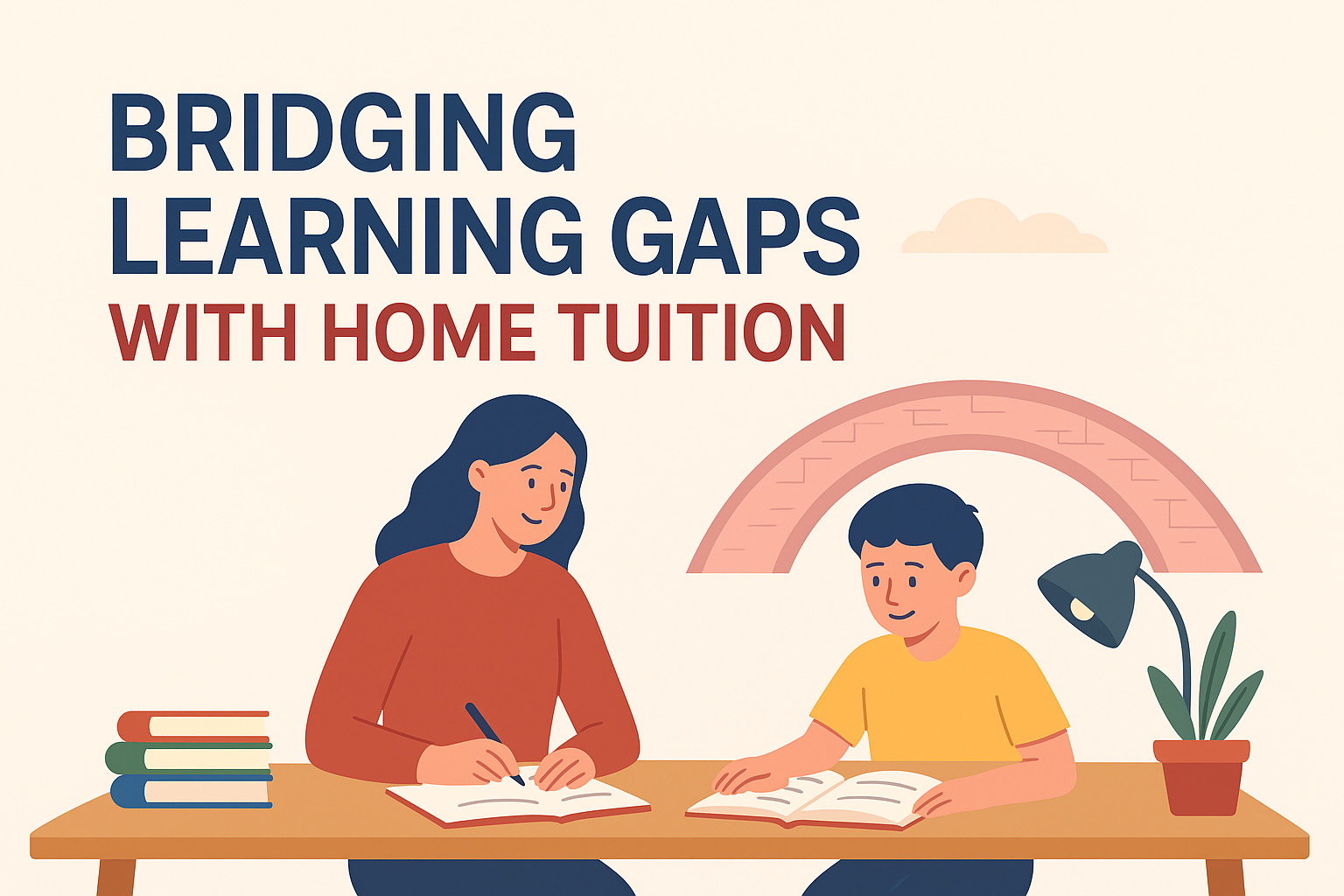In today’s fast-moving education system, every child learns at a different speed. Some students easily understand new lessons in school, while others need more time and attention. But with large classrooms, busy teachers, and a fixed syllabus, not every student gets the support they need. This creates learning gaps — areas where the child struggles to keep up with the rest of the class.
This is where home tuition plays a powerful role. With personal attention, flexible teaching methods, and one-on-one guidance, home tuition helps students overcome these gaps and build a stronger academic foundation.
Let’s explore how exactly home tuition helps in bridging learning gaps.
What Are Learning Gaps?
Learning gaps happen when students don’t fully understand important concepts taught in school. These gaps can come from:
- Missing school due to illness or personal reasons.
- Not getting enough attention in crowded classrooms.
- Struggling with a specific subject like math, science, or language.
- Different learning speeds — some kids need more time to grasp ideas.
- Lack of confidence to ask questions in class.
If these gaps are not addressed early, they keep growing and make future learning harder. For example, a student who struggles with fractions in primary school may later face difficulties in algebra or geometry.
Why School Alone May Not Be Enough
Schools do their best, but with 30–50 students in a class, teachers cannot always focus on every child’s needs. Lessons are taught at the same pace for all, and students who lag behind may find it difficult to catch up.
Moreover:
- Teachers must complete the syllabus within strict timelines.
- Some children feel shy to ask questions in front of classmates.
- Every child has a unique learning style, which is hard to address in a group setting.
This is where home tuition makes a huge difference.
How Home Tuition Helps Bridge Learning Gaps
1. Personalized Attention
In home tuition, the tutor teaches only one student at a time. This allows the tutor to identify where exactly the child is struggling and design lessons to focus on those areas. For example, if a student is good in science but weak in math, the tutor can give extra practice in math while still supporting other subjects.
2. Learning at the Child’s Own Pace
In school, the teacher moves forward with the syllabus even if some students don’t fully understand. But in home tuition, the tutor adjusts the speed. If a child needs more time on a concept, the tutor patiently explains until the child gains confidence.
3. Building Strong Fundamentals
Most learning gaps exist because students don’t understand the basics. Home tutors can go back to earlier topics and revise them. For example, if a student struggles with algebra, the tutor may first revisit basic arithmetic and fractions before moving forward. This step-by-step process strengthens the foundation.
4. Boosting Confidence
Struggling students often feel embarrassed or scared to speak up in class. Home tuition provides a safe, supportive space where children feel comfortable asking questions. As they understand concepts better, their confidence grows, and they participate more actively in school.
5. Customized Teaching Methods
Every child learns differently — some are visual learners, some prefer writing, while others understand better through real-life examples. A home tutor can adapt teaching methods to match the child’s style, making learning more effective and enjoyable.
6. Regular Assessment and Feedback
Tutors closely monitor the child’s progress through regular tests, quizzes, or oral discussions. Parents also get timely feedback on their child’s improvement. This ensures learning gaps are identified early and corrected before exams.
7. Reducing Stress and Pressure
Many students feel stressed when they fall behind in class. Home tuition helps reduce this pressure because the tutor works on weak areas step by step, making learning less overwhelming. When children start scoring better, their stress levels drop, and they feel more motivated.
8. Encouraging Independent Learning
A good tutor not only teaches but also encourages students to develop problem-solving skills, time management, and independent study habits. This long-term approach ensures that children not only bridge current learning gaps but also become lifelong learners.
Real-Life Example
Let’s take the example of Aarav, a Grade 7 student. He was good at science but struggled with mathematics, especially fractions and decimals. Because of this, he started scoring low and lost interest in the subject. His parents hired a home tutor who patiently revised basic concepts with him. Within a few months, Aarav regained confidence, understood algebra better, and improved his overall grades.
This shows how personalized support can transform a child’s learning journey.
Long-Term Benefits of Bridging Learning Gaps with Home Tuition
- Better Academic Results: Once gaps are filled, students score higher in exams.
- Improved Focus: With no confusion, children can concentrate on new lessons better.
- Stronger Future Learning: Solid basics make advanced topics easier.
- Motivation and Self-Confidence: Success builds a positive attitude towards learning.
- Life Skills Development: Tutors teach discipline, study habits, and problem-solving.
Conclusion
Every child deserves the chance to succeed in school. But learning gaps can hold them back if not addressed in time. Home tuition provides personalized, flexible, and focused learning support that schools often cannot offer. By strengthening fundamentals, boosting confidence, and giving one-on-one attention, tutors help children bridge gaps and unlock their true potential.
So, if your child is struggling in school, investing in home tuition could be the key to turning challenges into opportunities.




